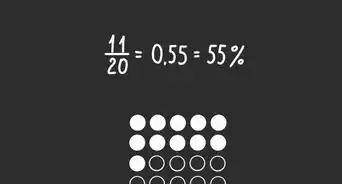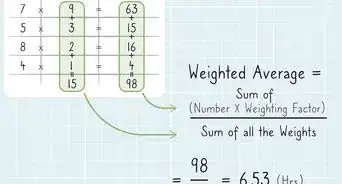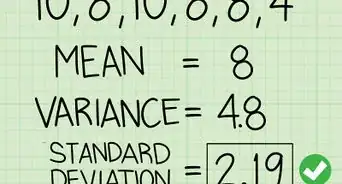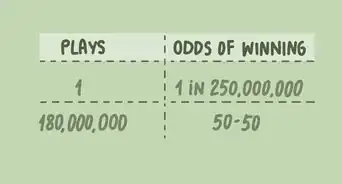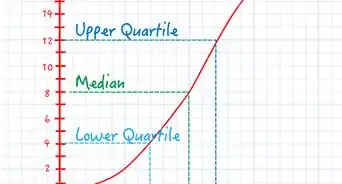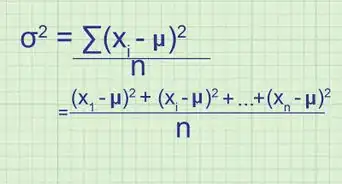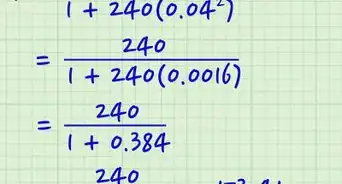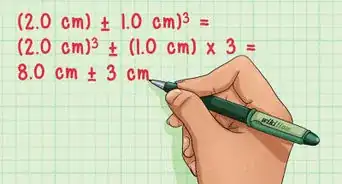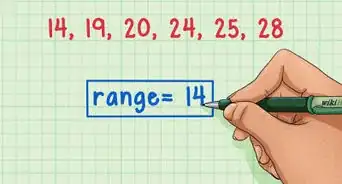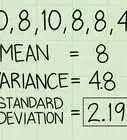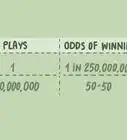This article was co-authored by Jake Adams. Jake Adams is an academic tutor and the owner of Simplifi EDU, a Santa Monica, California based online tutoring business offering learning resources and online tutors for academic subjects K-College, SAT & ACT prep, and college admissions applications. With over 14 years of professional tutoring experience, Jake is dedicated to providing his clients the very best online tutoring experience and access to a network of excellent undergraduate and graduate-level tutors from top colleges all over the nation. Jake holds a BS in International Business and Marketing from Pepperdine University.
This article has been viewed 616,661 times.
The percentage error is, formally, the magnitude of the difference between an exact and an approximate value divided by the magnitude of the exact value per 100 cases (percentage form). Essentially, this allows you to see how far off an approximate value and an exact value are in a percentage of the exact value. The error can be because of measuring errors (tools or human error) or because of approximations used in calculating (rounding errors, for example). Regardless, the formula is straight forward and simple to calculate.
Steps
Calculating the Values Part of the Equation
-
1Write down the formula for percentage error. The formula for calculating percentage error is simple: [(|Approximate Value - Exact Value|) / Exact Value] x 100. You will use this as a reference to plug in the two values you need to know.[1]
- The approximate value is your estimated value, and the exact value is the real value.
- For example, if you guess that there will be 9 oranges in a bag, but there are actually 10, 9 is the approximate value, and 10 is your exact value.
-
2Subtract the exact value from the approximate one. In the example of oranges, you will subtract 10 (the exact value) from 9 (the estimated value). In this case, the result is 9 - 10 = -1. [2]
- This difference is considered the magnitude of difference in approximate and estimated values. This begins to tell you how far off the results were from what they were expected to be.
Advertisement -
3Find the absolute value of the top result. Since the formula uses the absolute value of the difference, you can discard a negative sign. In this example, -1 will become just 1.[3]
- In the oranges example, 9 - 10 = -1. The absolute value of -1, written as |-1|, is 1.
- If your result is positive, leave the number as it is. For example, 12 apples (approximate) - 10 apples (exact) = 2. The absolute value of 2 (|2|) is just 2.
- In statistics, taking the absolute value simply means you don't care which direction your guess was off (either too high—positive—or too low—negative). You just want to know how far off the estimate was from the exact value.
-
4Divide that result by the absolute exact value. Either with a calculator or by hand, divide the top number by the absolute value of your exact variable. In this example, the exact value is already positive, so you just need to divide 1 (from the previous step) by 10 (the exact number of oranges).[4]
- For this example, 1/|10| = 1/10.
- In some cases, the exact value might be a negative number to begin with. If this is the case, you want to ignore the negative (i.e. take the absolute value of the exact number).[5]
Finalizing Your Answer in Percentage Form
-
1Convert the fraction into decimal form. To convert the fraction into a percentage, it is easiest to have a decimal number.[6] For our example, 1/10 = 0.1. Calculators will be able to convert more difficult numbers quickly for you.
- If you cannot use a calculator, it may take using long division to convert the fraction to a decimal. Usually, about 4 or 5 digits past the decimal place will be sufficient to round to.
- You should always be dividing a positive number by a positive number when converting to decimal form.
-
2
-
3Check your work to make sure the answer is correct. Often swapping signs (positive/negative) and dividing can lead to minor errors in your calculations. It is best to go back to check your answer makes sense.[8]
- In our example, we want to make sure that our approximation of 9 oranges is off by 10% of the actual value of oranges. 10% (10% = 0.1) of 10 oranges is 1 (0.1 x 10 = 1).
- 9 oranges + 1 = 10 oranges. This confirms that the guess of 9 was indeed off by just 1 oranges or 10% of the actual value of 10 oranges.
Community Q&A
-
QuestionIn a resistor, the relationship between the voltage V, the current I and resistance R, is given by Ohm's law: V=IR. If the voltage is constant, how is the relative change in R related to the relative change in the current?
 DonaganTop AnswererI and R are inversely proportional. That means that as I increases, R decreases by the same percentage (and vice versa).
DonaganTop AnswererI and R are inversely proportional. That means that as I increases, R decreases by the same percentage (and vice versa). -
QuestionDo I use significant figures while calculating percentage error?
 DonaganTop AnswererYes.
DonaganTop AnswererYes. -
QuestionHow do I calculate the percentage error in the kinetic energy of a particle?
 Community AnswerMultiplying the relative errors of measuring the mass and the velocities should do.
Community AnswerMultiplying the relative errors of measuring the mass and the velocities should do.
References
- ↑ https://www.cuemath.com/commercial-math/percent-error/
- ↑ https://www.mathsisfun.com/numbers/percentage-error.html
- ↑ https://www.mathsisfun.com/numbers/percentage-error.html
- ↑ https://www.mathsisfun.com/numbers/percentage-error.html
- ↑ http://astro.physics.uiowa.edu/ITU/glossary/percent-error-formula/
- ↑ https://www.mathsisfun.com/converting-fractions-decimals.html
- ↑ https://sciencenotes.org/calculate-percent-error/
- ↑ https://sciencenotes.org/calculate-percent-error/
About This Article
To calculate percentage error, use the formula: [(exact value - approximate value)/exact value] x 100. First, subtract the approximate value from the exact value. Then, divide that number by the exact value. Finally, convert fractions to decimal form and multiply your answer by 100 to find the percentage error. If you want to learn how to check your answers, keep reading the article!







